This page is based on this
Wikipedia article Text is available under the
CC BY-SA 4.0 license; additional terms may apply.
Images, videos and audio are available under their respective licenses.
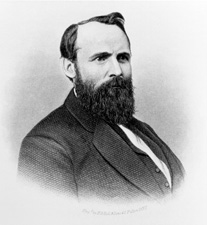
Ozora Pierson Stearns was an American politician.

Willard Warner was a brevet brigadier general in the Union Army during the American Civil War. He was a U.S. senator from the state of Alabama after the war.

Lucius Fairchild was an American politician, army general, and diplomat. He served as the tenth Governor of Wisconsin and as U.S. Minister to Spain.

Ferdinand Van Derveer was a lawyer and a brigadier general in the Union Army during the American Civil War.
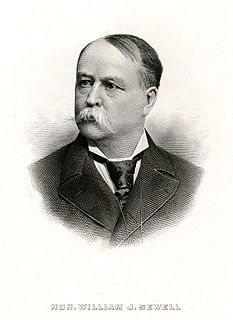
William Joyce Sewell was an Irish-American politician, merchant, and military officer who served as a U.S. Senator from New Jersey. Sewell was born in Castlebar, County Mayo, Ireland. He immigrated to the United States in 1851 where he worked in the merchant industry in Chicago, Illinois before moving to Camden, New Jersey in 1860. He served as an officer in the Union Army during the American Civil War, receiving the Medal of Honor for his actions at the Battle of Chancellorsville. He was also a postbellum state senator and U.S. Senator. The community of Sewell, New Jersey is named for him.
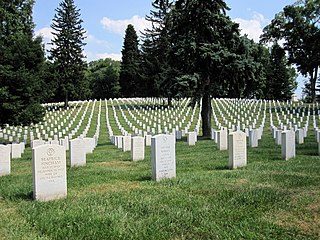
Culpeper National Cemetery is a United States National Cemetery located in the town of Culpeper, in Culpeper County, Virginia. Administered by the United States Department of Veterans Affairs, it encompasses 29.6 acres (120,000 m2) of land, and as 2014, had over 11,000 interments.
Samuel Prather Snider was a Representative from Minnesota. He was born in Mount Gilead, Morrow County, Ohio and attended the public schools, the local high school at Mount Gilead, Ohio, and Oberlin College, Ohio.
William J. Archinal was an American Civil War Union Army soldier who received the Medal of Honor for his actions at the Battle of Vicksburg.

William Lewis Stoughton was a politician and soldier from U.S. state of Michigan who served in the United States Congress, as well as serving as an officer and brigade commander in the Union Army during the American Civil War.

John Alexander Logan Jr., born Manning Alexander Logan, was a United States Army officer who posthumously received the Medal of Honor for actions during the Philippine–American War.
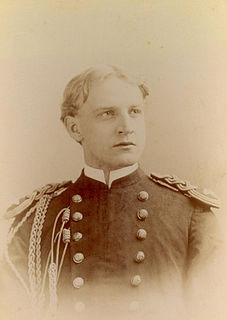
Charles Goodwin Bickham was a United States Army first lieutenant who received the Medal of Honor for "distinguished gallantry" on May 2, 1902, in the Battle of Bayang, during the Moro Rebellion. Lieutenant Bickham carried a wounded soldier across a "fire-swept field".

Laurin Dewey Woodworth was a U.S. Representative from Ohio and member of the Woodworth political family.
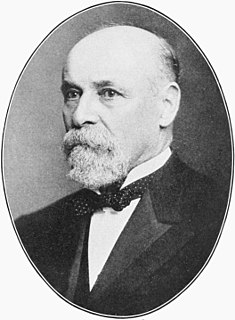
Robert Patterson Kennedy was a U.S. Representative from Ohio, as well as an officer in the Union Army during the American Civil War.
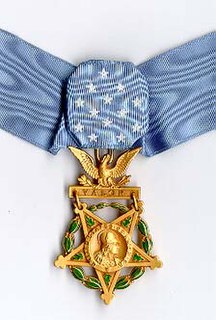
Christian Albert was an American soldier who received the Medal of Honor for valor during the American Civil War.

George VanStavoren Kelley was a line officer in the Union Army during the American Civil War. He received the Medal of Honor for gallantry at the Battle of Franklin during the 1864 Franklin-Nashville Campaign.

Jabez Warner Fitch was an American politician who served as the 14th Lieutenant Governor of Ohio from 1878 to 1880 under Governor Richard M. Bishop. He was a Democrat from Cuyahoga County.

Marcus M. Spiegel was one of the highest ranking Jewish officers in the U.S. Army during the American Civil War. He served in the 67th and 120th Ohio Volunteer Infantry. During the course of the war he became a staunch abolitionist. He served at the Siege of Vicksburg, and was mortally wounded during the Red River Campaign in May 1864.
William Ernest Goodman was an American soldier who fought in the American Civil War. Goodman received his country's highest award for bravery during combat, the Medal of Honor. Goodman's medal was won when he rescued the colors of the 107th Ohio Infantry from Confederate States Army forces during the Battle of Chancellorsville, in Virginia on March 3, 1863. He was honored with the award on January 11, 1894.
Christian Schnell was an American soldier who fought for the Union Army during the American Civil War. He received the Medal of Honor for valor.














